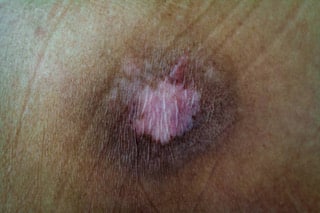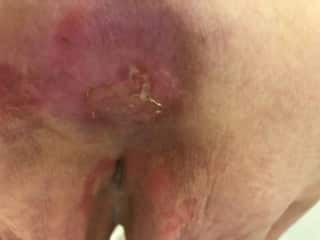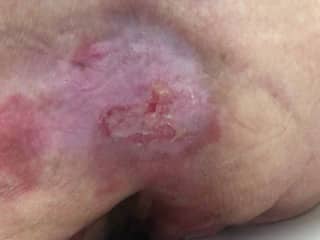Pressure ulcers (also known as bed sores and pressure ulcers) are wounds that are commonly found on bony prominences. These wounds progress through four stages and can culminate in the wound infecting a bone, requiring surgery.
Features of pressure sores include:
Pressure sores usually start when people have been lying in bed in one position for too long. When pressure on the skin from bony areas is too great, red spots can form. If these spots continue untreated, subcutaneous fat may appear and muscles, tendons and bones can be exposed. The most common spots for pressure sores are the heels, ankles and tailbone.
Stage I: A wound forms indicated by a red spot. A pressure sore at this stage can be reversed through prompt care.
Stage II: An open sore forms and pus or fluid may be seen. Red skin starts to blister and the area around it may be irritated.
Stage III: A wound extends through the second layer of skin tissue. A sunken hole called a “crater” forms. The tissue below the skin may be very painful and needs immediate medical attention.
Stage IV: A wound is at high risk for infection and requires immediate treatment.



Pressure sores can be prevented by moving patients and preventing too much pressure from occurring in specific, bony parts of the body.